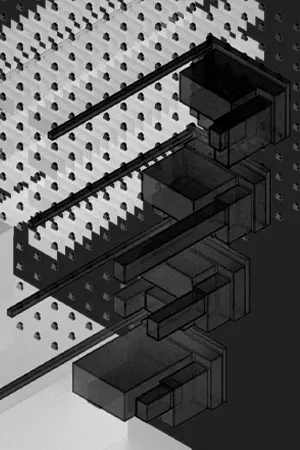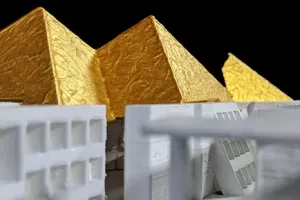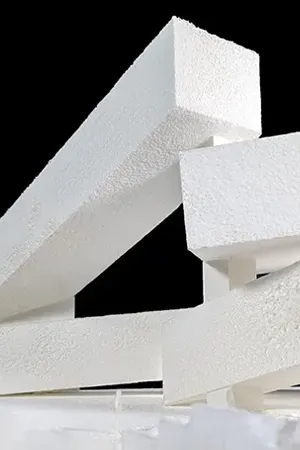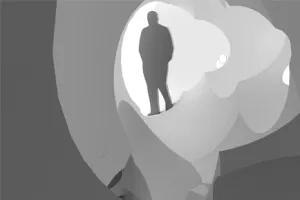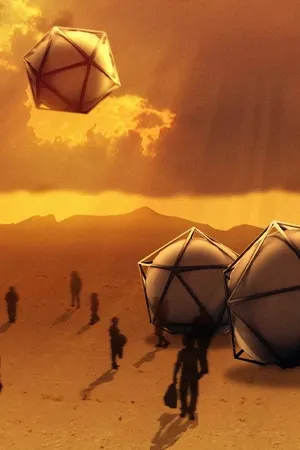
A Family of Six

The project began when a partner (Sammy Rupp) and I were given a primitive shape (above, center). The first objective was to manipulate it exhaustively. At this stage, we were aware that the ultimate goal was to make a chess set, but we were instructed to disregard that for the time being. What followed were thousands (around 2400, actually) of iterations playing with different types and degrees of manipulation. We identified 24 points of manipulation (point, line, and curve). We identified 2 primary means of manipulation: gestural (pushing/pulling) and add/subtract (using existing parts of the primitive shape).
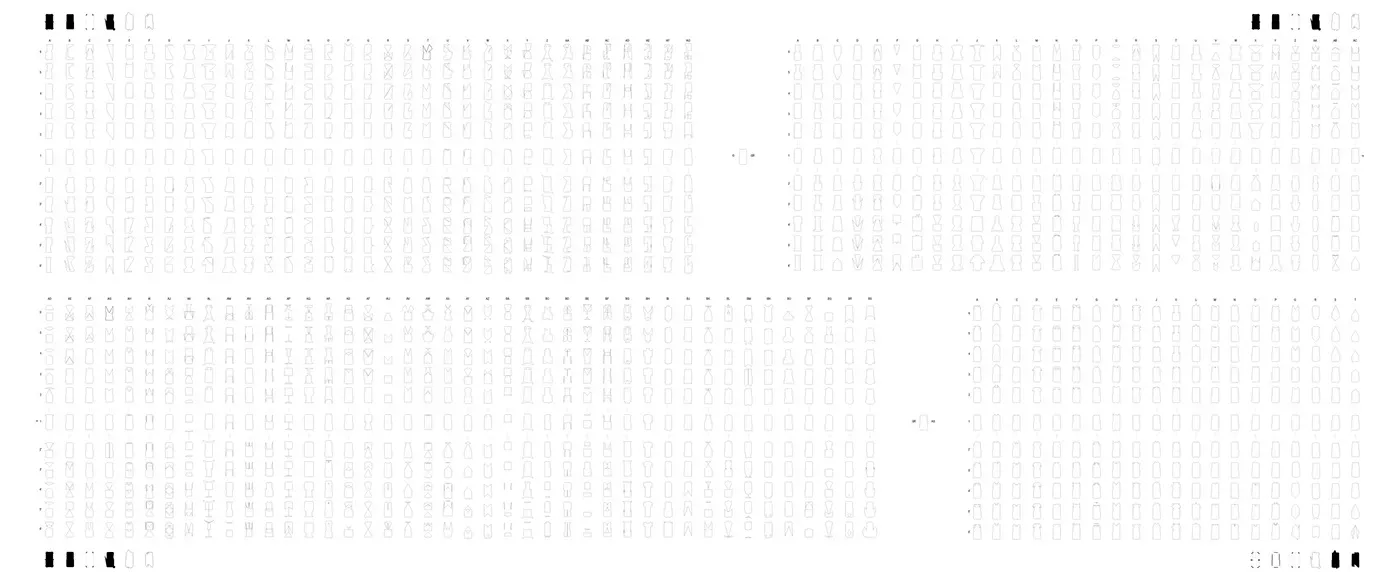
My partner and I then selected one iteration that we then manipulated even further with the idea of creating a chess piece in mind. These iterations became building blocks for the actual pieces.

Below are the final chess pieces and the different parts of them (base, stem, collar, and finials). Each piece would be easily manipulated to become another.


As these silhouettes were to become physical chess pieces, there then came the challenge of translating these ambiguous 2-dimensional objects into tangible, 3-dimensional pieces. My partner and I wanted this translation to pull meaning from the very interaction between the piece to the 2-dimensional board. The movement capacity of each piece set the number of manipulations applied to the piece. These changes were made so as to retain the original silhouette from at least one elevation.
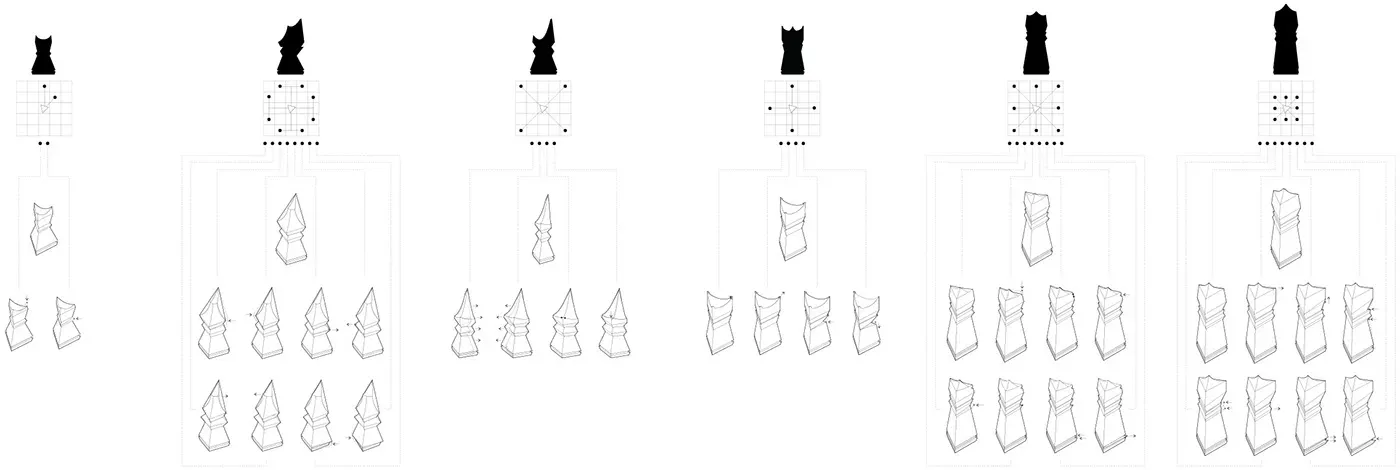


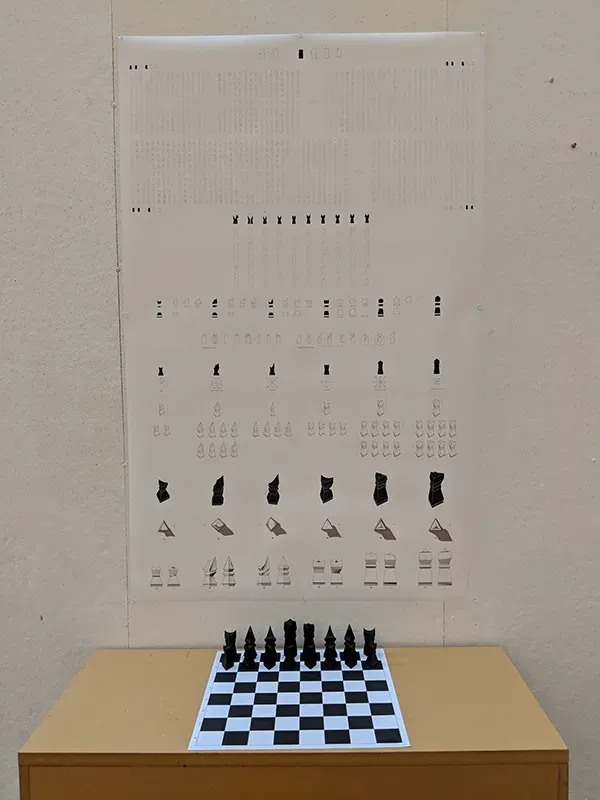
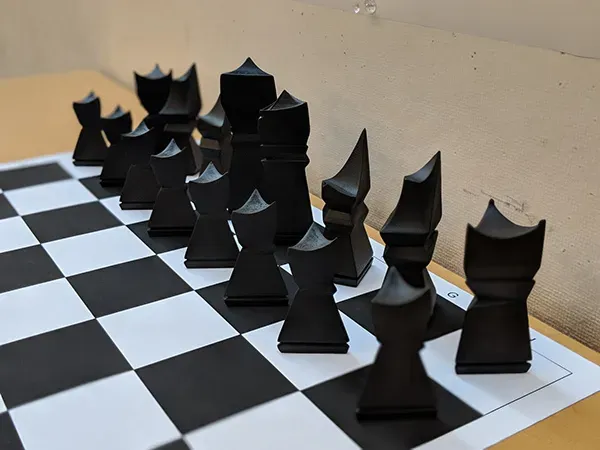
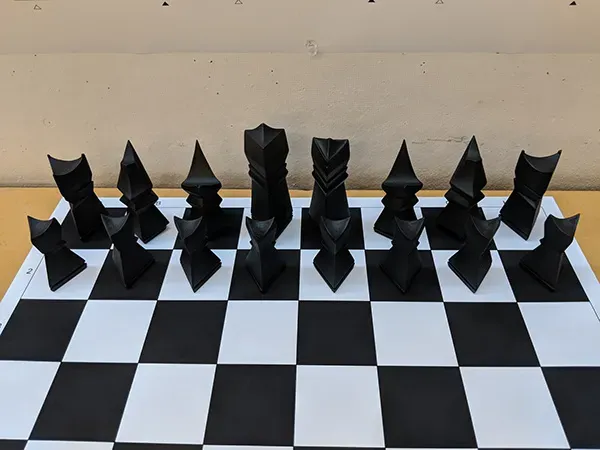
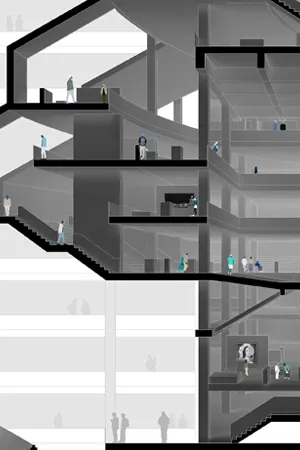


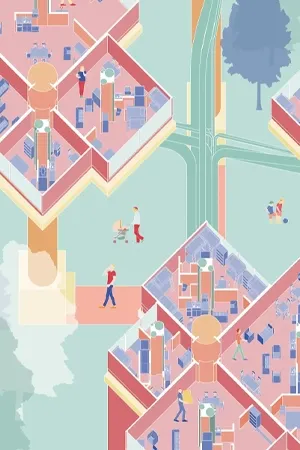
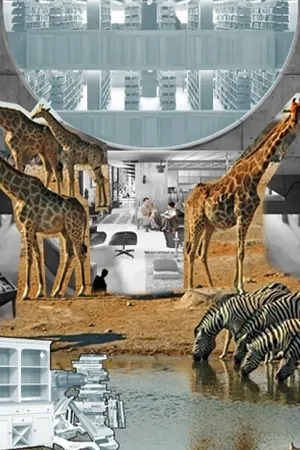
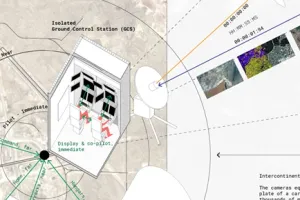

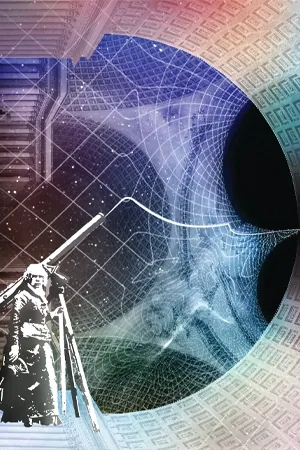

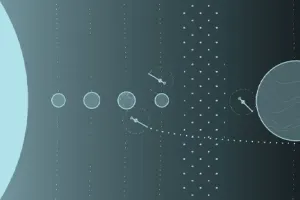

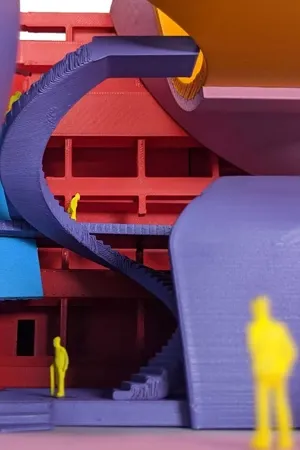
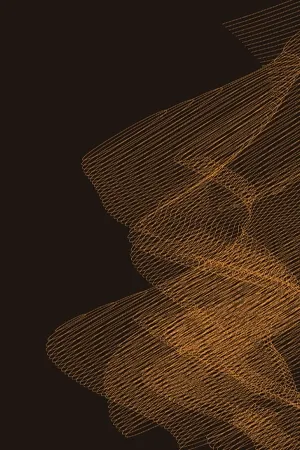
![[Conserv/Labor]-atory](/content/images/size/w300/2024/03/interior-high.jpg)
